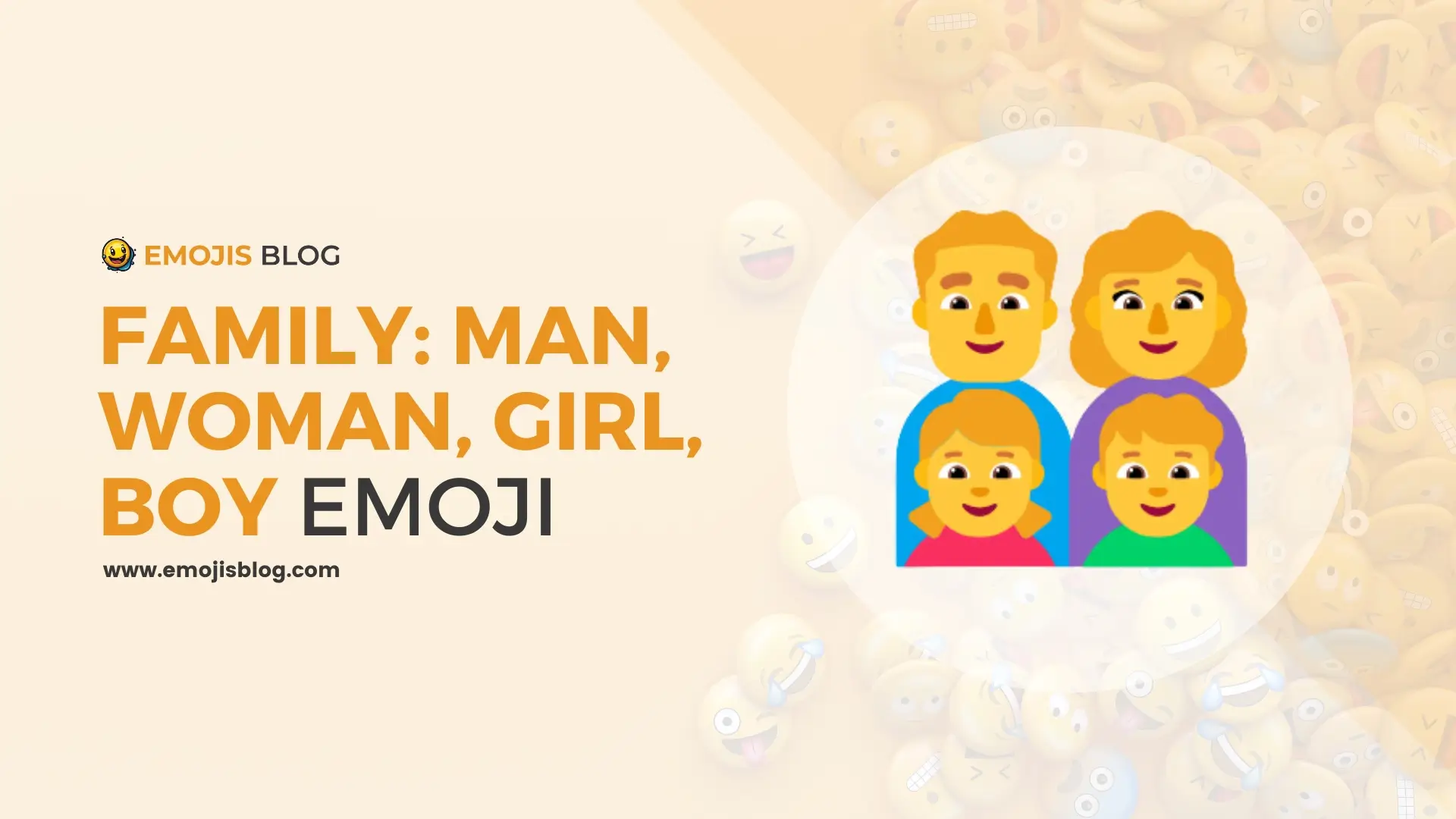Family: Man, Woman, Girl, Boy Emoji 👨👩👧👦 Meanings
👨👩👧👦
Family: Man, Woman, Girl, Boy Emoji 👨👩👧👦 Meanings
The Family: Man, Woman, Girl, Boy emoji 👨👩👧👦 represents a traditional nuclear family consisting of a father, mother, daughter, and son. It symbolizes family unity, love, and the bond between parents and children. This emoji is widely used in digital communication to convey sentiments related to family life, celebrations, and togetherness. It can be employed in social media posts, messages, and profiles to share family moments, discuss family matters, or simply to indicate one’s family status. The emoji reflects societal values and the importance of family in personal identity and relationships.
Technical Information
| Attribute | Description |
|---|---|
| Unicode | U+1F468 U+200D U+1F469 U+200D U+1F467 U+200D U+1F466 |
| Shortcode | :family_man_woman_girl_boy: |
| Introduced in Unicode | Unicode 6.0 (2010) |
| Introduced in Emoji | Emoji 1.0 (2015) |
| Categories | People & Body |
| Subcategories | Family |
| Code Points | 1F468, 200D, 1F469, 200D, 1F467, 200D, 1F466 |
| Apple Name | 👨👩👧👦 Family: Man, Woman, Girl, Boy |
| Display on Different Platforms | Supported on platforms including Apple, Google, Microsoft, Samsung |
| Variations | Same-gender families, single-parent families, various combinations of children |
| Example Use | “Had a great day at the park with the family 👨👩👧👦!” |
| Related Emojis | 👨👩👧 (Family: Man, Woman, Girl), 👨👩👦 (Family: Man, Woman, Boy), 🏡 (House) |
What Does the Family: Man, Woman, Girl, Boy Emoji 👨👩👧👦 Mean?
The Family: Man, Woman, Girl, Boy emoji 👨👩👧👦 is a popular emoji used to represent a family unit consisting of a father, mother, daughter, and son. This emoji is widely used across various digital platforms to convey messages related to family, unity, and love. Understanding the meaning and usage of this emoji can enhance communication in digital interactions, especially when expressing sentiments related to family life.
Historical Background
The Family: Man, Woman, Girl, Boy emoji was introduced as part of Unicode 6.0 in 2010 and was added to Emoji 1.0 in 2015. Unicode is the standard for digital text representation, ensuring that emojis appear consistently across different devices and platforms. The introduction of family emojis was a significant step towards representing diverse family structures in digital communication.
Symbolism and Representation
The Family: Man, Woman, Girl, Boy emoji visually depicts a nuclear family with two parents (a man and a woman) and two children (a girl and a boy). This emoji symbolizes:
- Family Unity: Represents the concept of a united family.
- Parental Roles: Highlights the presence of both a mother and a father.
- Sibling Relationship: Indicates the bond between siblings, both brother and sister.
Usage in Digital Communication
Expressing Family Values
People often use the Family: Man, Woman, Girl, Boy emoji to express love and affection towards their family. It is common in social media posts, text messages, and digital communication to:
- Share family moments and events.
- Celebrate family-related occasions like birthdays, anniversaries, and holidays.
- Convey messages of support and togetherness.
Representing Family in Conversations
This emoji is used to represent a family in various contexts, such as:
- Planning family gatherings or outings.
- Discussing family-related topics or issues.
- Indicating family status or relationship in personal bios or profiles.
Variations and Diversity
To promote inclusivity, Unicode has introduced several variations of family emojis to represent different family structures and dynamics. These include:
- Same-Gender Families: Emojis depicting two mothers or two fathers with children.
- Single-Parent Families: Emojis representing a single parent with one or more children.
- Different Combinations of Children: Families with varying numbers of boys and girls.
These variations ensure that emojis can represent a broader spectrum of family arrangements, catering to diverse social realities.
Cultural Impact
The inclusion of family emojis in digital communication reflects the evolving understanding of family in modern society. It acknowledges the diversity and complexity of family units, promoting a more inclusive and representative approach to digital expression. The Family: Man, Woman, Girl, Boy emoji and its variations help normalize different family structures and foster a sense of acceptance and recognition.
Conclusion
The Family: Man, Woman, Girl, Boy emoji 👨👩👧👦 is more than just a digital icon; it is a representation of family values, unity, and diversity. Its use in digital communication allows individuals to express their love and connection to their families, share family experiences, and represent their family structure. As digital communication continues to evolve, the role of emojis like this one will remain significant in conveying complex human relationships and emotions succinctly and effectively.

